Inductive Reasoning Test (2025 Guide)
All products and services featured are independently selected by WikiJob. When you register or purchase through links on this page, we may earn a commission.
- What Is an Inductive Reasoning Test?
- What's the Difference Between Inductive and Deductive Tests?
- What Do Inductive Reasoning Tests Look Like?
empty
empty
empty
- What Do Inductive Reasoning Tests Consist Of?
- Inductive Reasoning Test Features
empty
empty
empty
empty
empty
empty
empty
empty
- Practice Inductive Reasoning Questions
empty
empty
empty
- Tips and Best Techniques for Passing the Inductive Reasoning Tests (2025)
empty
- How to Prepare and Practice for Inductive Reasoning
- Common Inductive Reasoning Test Publishers
What Is an Inductive Reasoning Test?
An inductive reasoning test is a type of cognitive assessment that measures a person's ability to identify patterns and draw logical conclusions based on a series of given examples or information.
Inductive reasoning involves making generalizations or predictions based on specific observations or evidence.
Inductive reasoning tests are designed to examine a candidate’s abstract reasoning ability; their ability to see patterns and consistencies in data and to work flexibly with unfamiliar information.
One of the main benefits of inductive reasoning tests is that they are not dependent upon language, which makes them a good tool for assessing international candidates or candidates for whom English is not their first language.
Moreover, they are usually very good for predicting problem solving ability, which is imperative in many jobs.
What's the Difference Between Inductive and Deductive Tests?
Inductive and deductive reasoning tests are both types of logical reasoning assessments used to measure an individual's ability to analyze information and draw conclusions.
Deductive reasoning involves drawing specific conclusions from general statements or principles. It moves from general premises to specific conclusions.
Deductive tests typically present a set of rules or principles and require you to apply them to specific scenarios to determine the correct answer.
Inductive reasoning involves making generalizations or predictions based on specific observations or evidence. It moves from specific examples to general conclusions.
Inductive tests typically present a series of patterns, sequences, or relationships and require you to identify the underlying rule or pattern and apply it to new examples.
What Do Inductive Reasoning Tests Look Like?
Inductive reasoning tests can take different forms, but they typically involve a series of patterns, sequences or groups of objects.
Here are a few examples of what inductive reasoning test questions may look like:
Pattern Completion
You are presented with a series of shapes or figures and one or more shapes are missing.
Your task is to identify the missing shape(s) by recognizing the pattern or rule that governs the sequence.
For example:
A | B | C
D | E | F
G | ? | I
In this case, the missing shape is "H" because the pattern involves letters progressing alphabetically across the rows.
Matrix Reasoning
You are shown a grid or matrix with various shapes or symbols.
Your task is to identify the missing element that completes the pattern or relationship among the elements in the grid.
For example:
Circle | Triangle | Square
Square | Triangle | Circle
Triangle | ? | Circle
In this case, the missing shape is "Square" because each row contains one of each shape, and the third element in each row is a circle.
Sequence Recognition
You are given a sequence of numbers, letters or symbols, and you need to identify the next item in the sequence based on the underlying pattern.
For example:
2, 4, 8, 16, ?
In this case, the pattern is that each number is multiplied by 2 to obtain the next number.
Therefore, the missing number is 32.
What Do Inductive Reasoning Tests Consist Of?
Inductive reasoning tests may include various types of questions, such as:
- Identifying the next shape or pattern in a sequence.
- Recognizing relationships or associations between different elements.
- Completing a pattern or sequence by selecting the missing element.
- Determining which option does not fit the given pattern or rule.
- Inferring conclusions or predictions based on the observed patterns or relationships.
Inductive Reasoning Test Features
Here are some common features you may encounter in an inductive reasoning test:
Patterns and Sequences
Inductive reasoning tests often present a series of patterns, sequences, or groups of objects.
You'll need to identify the underlying rule or pattern that governs these elements and apply it to make predictions or complete the series.
Multiple-choice Format
Questions in an inductive reasoning test are typically presented in a multiple-choice format.
You'll be provided with several options to choose from, and your task is to select the option that best fits the pattern or completes the sequence.
Abstract and Visual Content
The content of inductive reasoning tests often involves abstract shapes, symbols or visual patterns rather than verbal or numerical data.
This challenges your ability to recognize relationships and patterns based on visual cues and abstract information.
Varied Difficulty Levels
Inductive reasoning tests may feature questions of varying difficulty levels.
As you progress through the test, the complexity of the patterns or relationships may increase, requiring you to adapt your analytical skills accordingly.
Time Constraints
Inductive reasoning tests are often timed, which adds an element of pressure.
You'll need to work efficiently to solve the questions within the given time limit.
Time management is crucial, so practice working under time constraints to improve your speed and accuracy.
Progressive Complexity
The questions in an inductive reasoning test may follow a progressive difficulty curve.
They may start with simpler patterns and gradually introduce more complex or abstract patterns.
This progression assesses your ability to adapt to new information and apply learned principles to unfamiliar situations.
Inductive Reasoning Concepts
The test may evaluate your understanding of various inductive reasoning concepts, such as analogies, sequencing, matrix reasoning, spatial reasoning or logical deductions.
It assesses your ability to identify and apply these concepts to solve problems.
Multiple Test Sections
In some cases, an inductive reasoning test may consist of multiple sections, each focusing on different aspects of inductive reasoning.
These sections may assess different types of patterns or relationships, allowing a comprehensive evaluation of your skills.
Practice Inductive Reasoning Questions
Inductive reasoning questions typically involve a number of diagrams or pictures.
The candidate must identify what the pattern, rule or association is between each item and then use this to select the next item in the sequence or to identify the box missing from the sequence.
While inductive reasoning questions test your ability to think broadly and creatively about a set of data, there are some techniques that you can use to help you.
We will explore these in the practice questions that follow below.
The answer in each case is just below the diagram, so don't scroll down too far!
Items That Move Around
There are many variants on this theme. On the most basic level, the elements move around within the box and you need to understand why they are moving in the order they are.
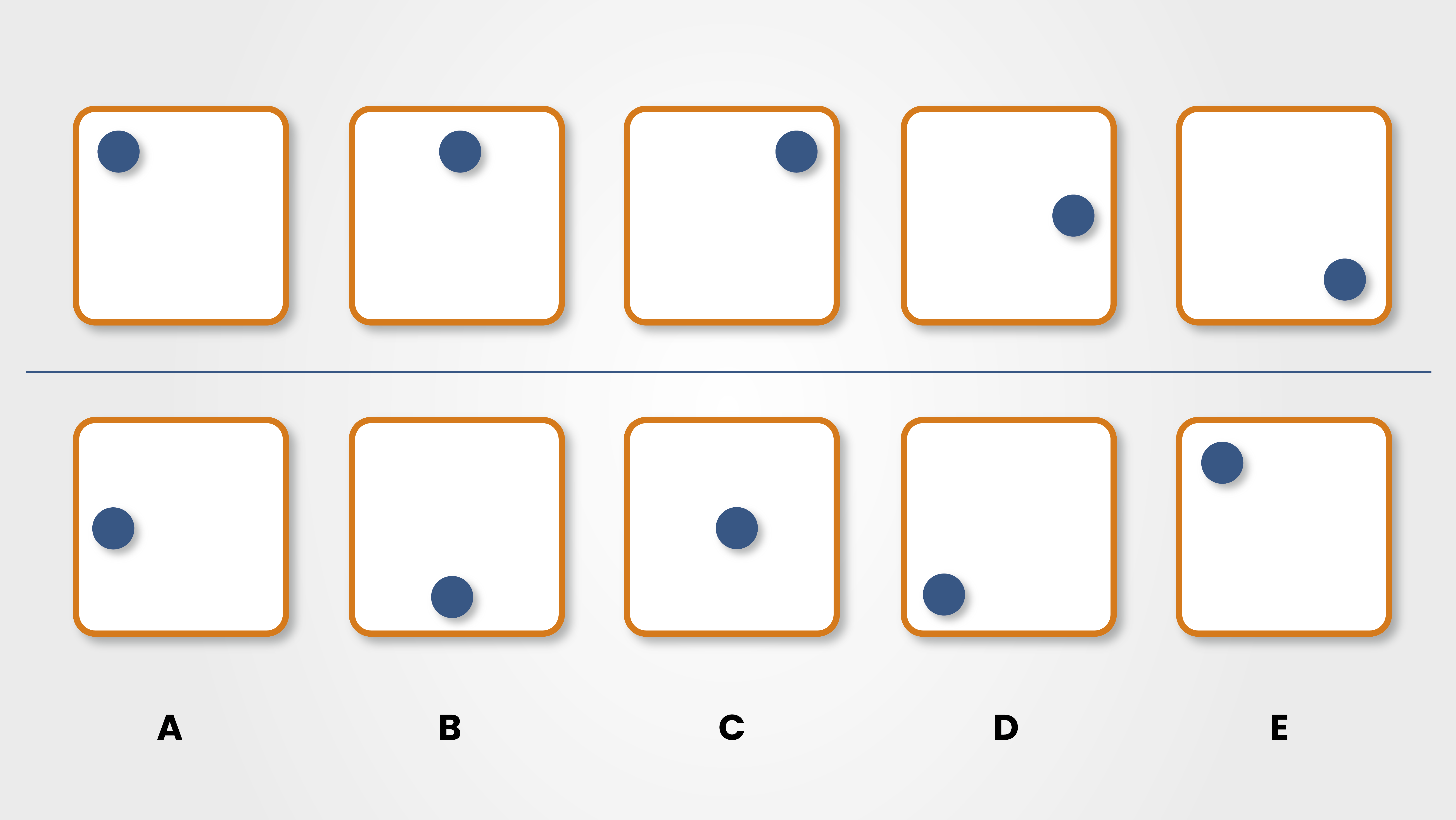
Which box is next in the sequence?
Prepare for Any Job Assessment Test with TestHQ
In many cases there will be multiple items that move around within the box and each will have its own sequence rule. This is shown in the question below.
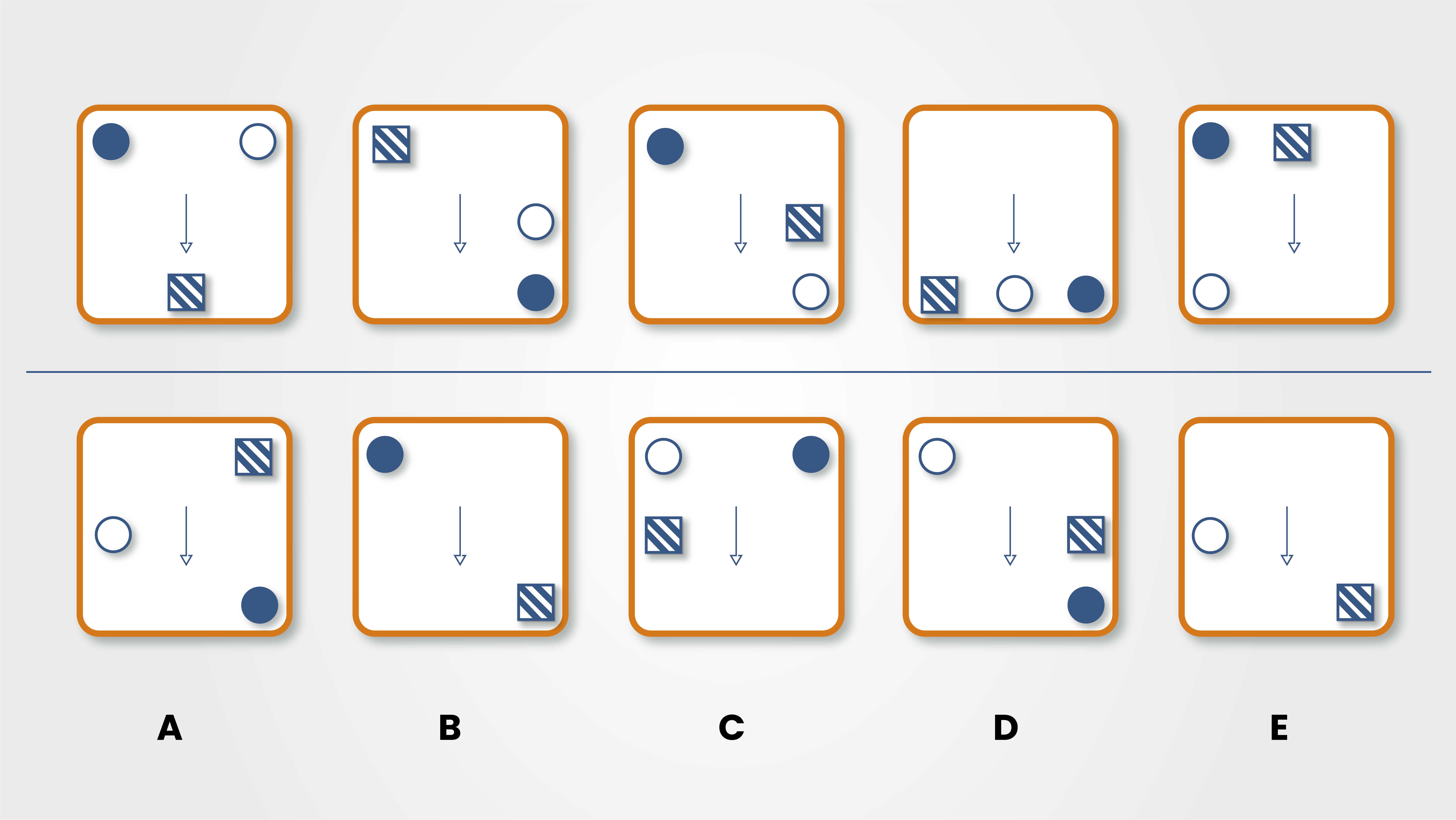
Which box is next in the sequence?
If you need to prepare for a number of different employment tests and want to outsmart the competition, choose a Premium Membership from TestHQ.
You will get access to three PrepPacks of your choice, from a database that covers all the major test providers and employers and tailored profession packs.
Prepare for Any Job Assessment Test with TestHQ
Relationships Between Particular Items
There are several ways that elements can have relationships with one another, for example:
- Where they are in relation to each other
- Number of sides shapes have in relation to each other
- Numbers that incrementally increase or decrease
To solve these types of questions you need to identify what the rule that governs the relationship is. Some examples will be explored in the questions below.
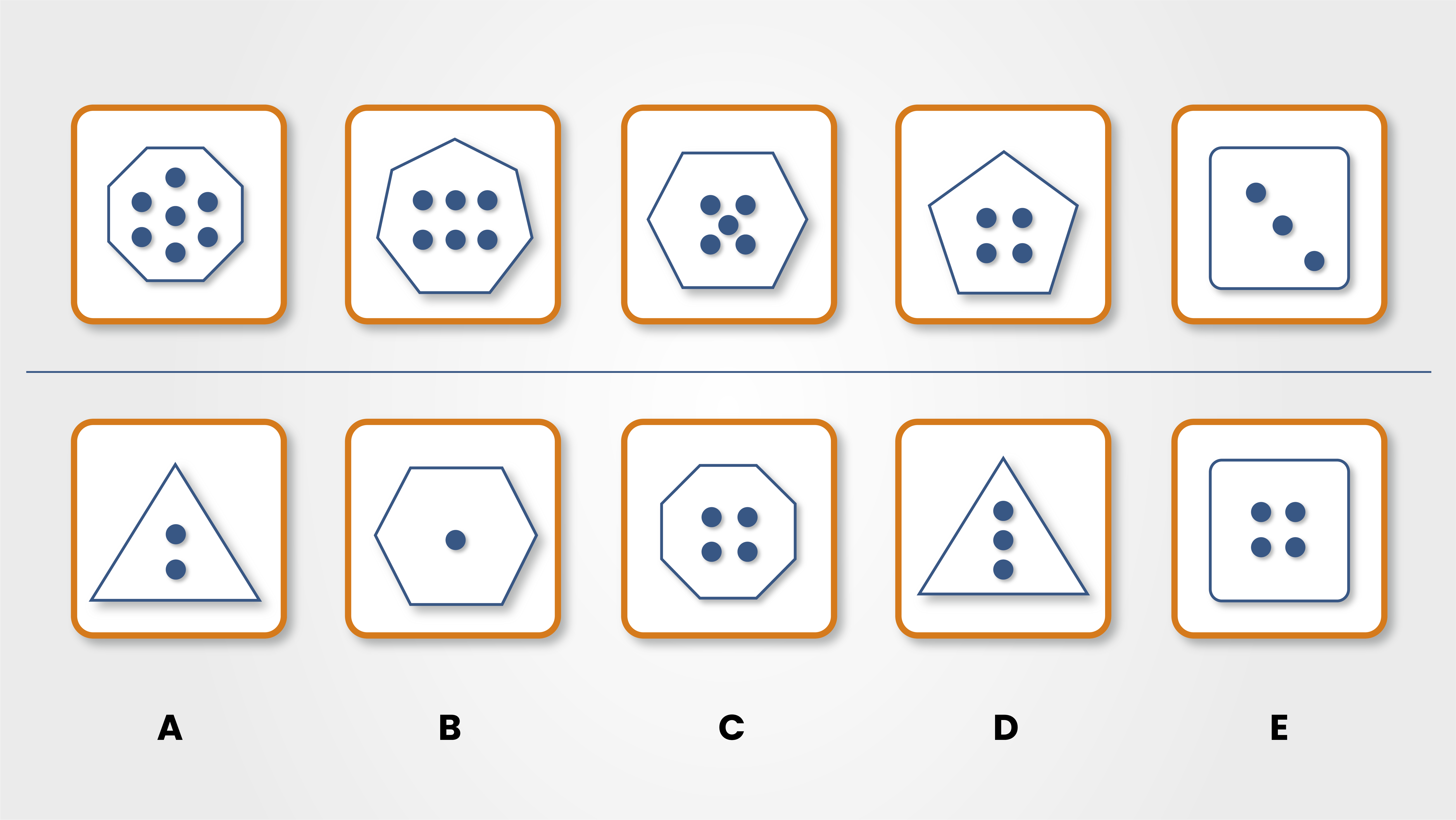
Which box is next in the sequence?
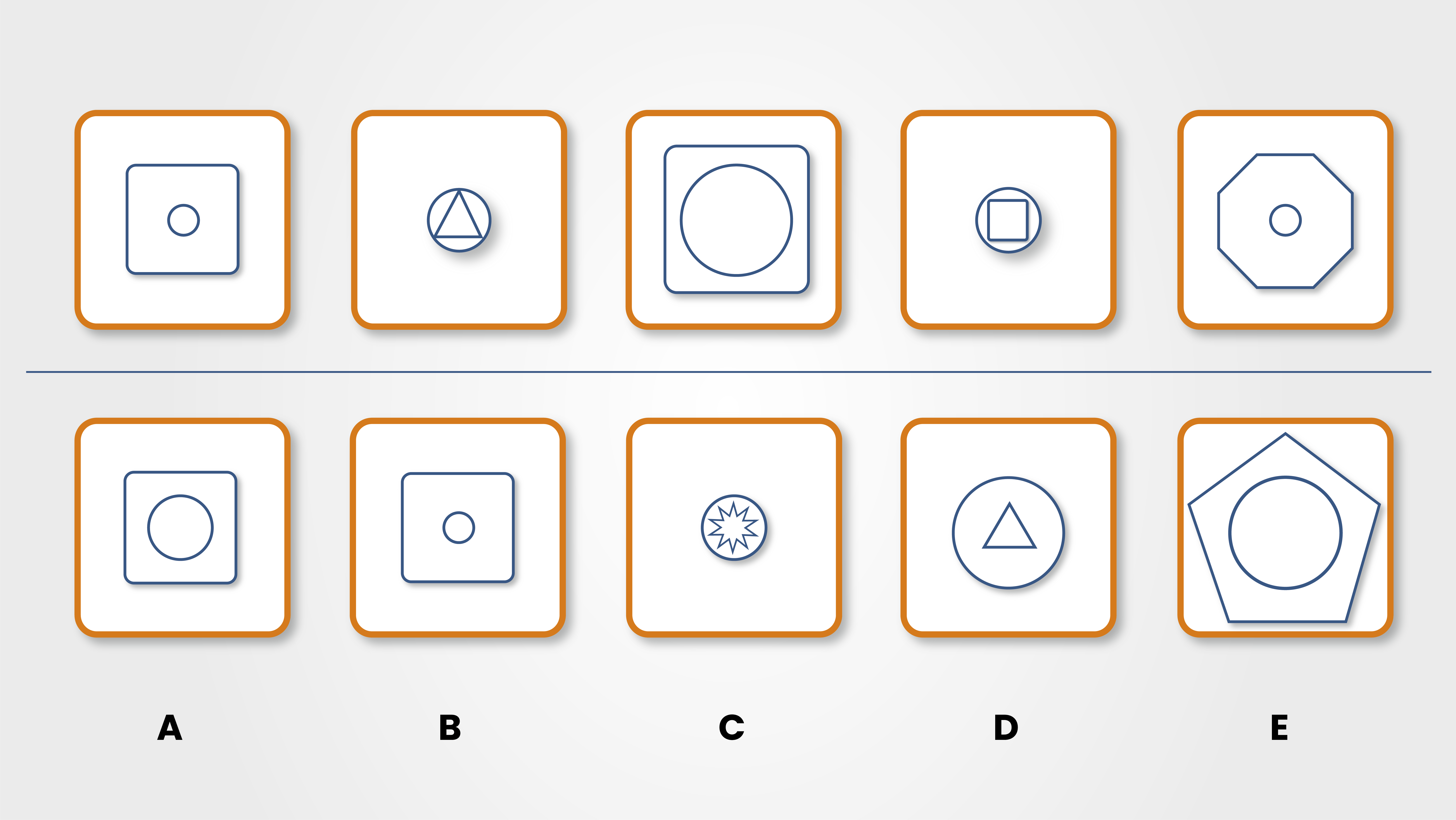
Which box is next in the sequence?
Be careful when looking at the sizes of shapes, as they can sometimes look distorted by the other shapes around them.
In the example above, the circles with shapes inside give the impression of being smaller than they are.
Optical illusions like this are sometimes used in inductive reasoning tests, so watch out for them.
Spatial Rotation
Spatial rotation is the ability to mentally imagine an item from another perspective.
Within inductive reasoning tests, spatial rotation often involves either imagining what a 3D image looks like from a different perspective, or what shape a flat shape might become when made 3D.
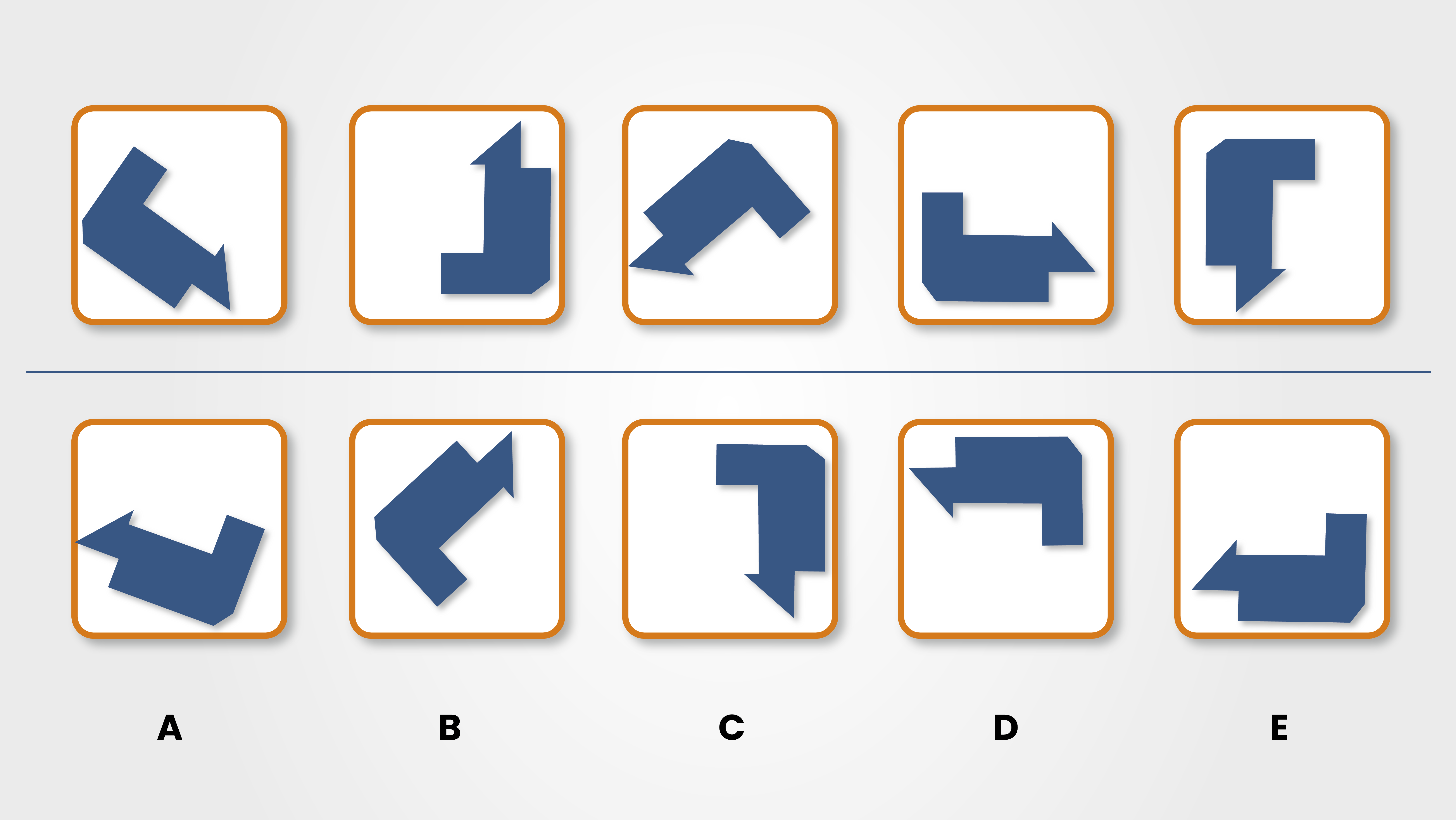
Which box contains the same shape as the top series?
Prepare for Any Job Assessment Test with TestHQ
Tips and Best Techniques for Passing the Inductive Reasoning Tests (2025)
These four tips are well worth remembering before you take the inductive reasoning test for real:
- Bring and use a stopwatch
- Learn the differences between test providers in terms of how they frame questions and how long the test will be
- Work swiftly but carefully
- Calculate the maximum amount of time to be allocated to a question and stick to it, using your stopwatch
The tests are timed, and typically there is time pressure. Most online tests are designed to be completed within the time allocated.
Practice Makes Perfect
It can be really helpful to practise some inductive reasoning tests before you have to complete one under test conditions.
This is because they are very different from the sorts of problems one tends to encounter in everyday life.
Familiarity with the types of questions they include will help ensure that you don’t panic or freeze when you first see them.
Moreover, the more examples you work through, the more sorts of patterns you will encounter and the more of a ‘feel’ you will get for the materials.
Make sure that you memorise the patterns discussed above but don’t let them blind you to creative alternative solutions.
Sometimes there may be questions where however much you look at them, you can’t see the pattern. Once you have given the question a good try move on. Don’t waste your time wrestling with one question at the expense of your overall performance.
Even though the terms inductive reasoning, diagrammatic reasoning and abstract reasoning are sometimes used interchangeably by employers when referring to aptitude tests, you need to be clear about which type of questions you can expect.
You can then practice the questions to make sure that you are comfortable with each type. This will allow you to spend your time answering the question rather than trying to work out how to answer it.
How to Prepare and Practice for Inductive Reasoning
Practicing inductive reasoning is essential for several reasons:
- Enhancing Pattern Recognition: Regular practice helps you develop a keen eye for identifying patterns, trends, and relationships quickly and accurately.
- Improving Problem-Solving Skills: Inductive reasoning tests simulate real-world problem-solving situations, helping you become better equipped to solve complex problems in various contexts.
- Increasing Test Performance: Familiarity with different types of inductive reasoning questions and exposure to various patterns and rules improves your performance and speed in completing such tests.
Common Inductive Reasoning Test Publishers
Several publishers provide inductive reasoning tests, including:
- SHL (Saville Assessment): SHL's Inductive Reasoning Test is widely used in the recruitment and selection process by various organizations.
- Kenexa: Kenexa, a subsidiary of IBM, offers inductive reasoning tests as part of their assessment portfolio.
- Talent Q: Talent Q provides a range of psychometric assessments, including inductive reasoning tests.
- AssessmentDay: AssessmentDay offers practice tests and resources for various types of reasoning assessments, including inductive reasoning.
It's worth noting that the specific publishers and tests used may vary depending on the employer or testing organization.









